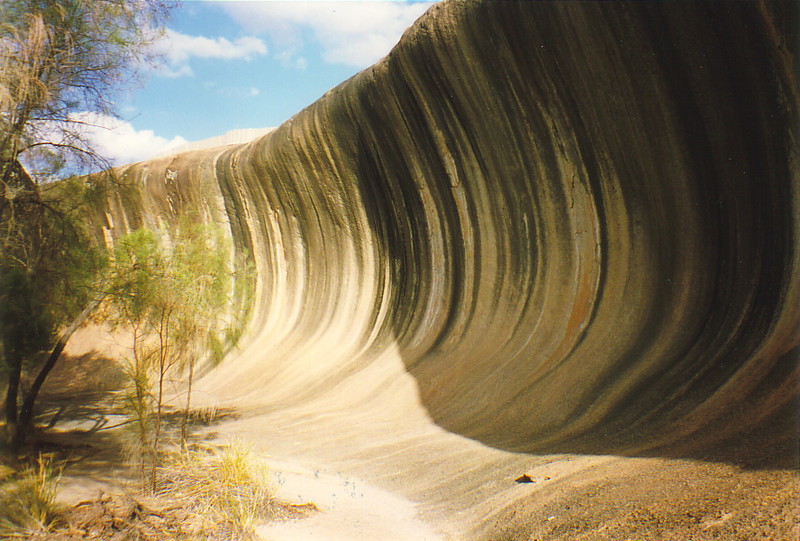
Before arriving in Perth, I'd fired off an email to the city's Acorn dealer and said it would be nice to meet up, and much to my surprise he invited me round for a chat. Wouldn't you know, my visit coincided with the girl on technical support going on holiday, so when we met up and I mentioned in passing that I was looking for a job, it suddenly turned a job interview. Much to my delight, I got offered three weeks' employment, starting in a couple of weeks' time; it would end up turning into five weeks of very satisfying work, charging up my coffers with impeccable timing.
After exhausting the sights and sounds of Perth, I decided to kill my last free week before work by heading due east from Perth to Kalgoorlie, the gold mining centre of WA, and the place that secured the future of the state. There was no point in rushing, so I plotted my course before setting off down the freeway.
My first stop on my journey east was York, a pleasant little town that proclaims itself to be the oldest town in WA after Perth. It was nice enough, if a little quiet, and proved the perfect place to relax in preparation for the journey into the outback. The only excitement was an incident involving this guy in a unit adjacent to the caravan park, who was obviously beating the shit out of his girlfriend, though she managed to escape and drive off in his car, which was a relief.
The next day I headed off to a little place called Hyden, home to some weird and wonderful rock formations. The most famous of these is Wave Rock, a strange wall of stone that has been eroded into a frozen surfing wave, complete with vertical stripes that make it look like a huge ice-cream breaker. Also in the area was a strange sight called the Hippo's Yawn, which looked just like a hippo's mouth, but to be honest I've seen more fascinating places; Tourist's Yawn is perhaps a more accurate name. One thing that is amazing about Wave Rock, though, is the wind. The area is so strangely shaped that when the wind blows through the treetops and you're hanging round the rock, the sound is really eerie. I was wandering around the back of the rock, keeping away from the busload of Japanese tourists who were destroying everything in their path (including the peace), when I first heard it – and it sounded utterly ancient. It's moments like this when you realise what a deeply spiritual land this is.
Wave Rock is also home to the largest collection of moths I've ever seen. I set up camp in the nearby campsite, and there I was, sitting by my petrol lamp and minding my own business with a good book, when suddenly all hell broke loose. I'm used to moths coming along to share my light, but this was more like a moth storm. Despite me constantly moving my chair – a rolling stone gathers no moths, after all – I eventually gave up and let the buggers use me as a bedroom. Two minutes later I looked up and saw this two-inch-long furry sod sitting on my knee, soaking up the rays, and, calm as someone whose mind is still involved in his book, I just brushed him off onto the floor, before it hit me just how big he was; it was only then that my skin crawled and I had to stand up and jump out of the light to calm down. Still, it's an improvement on screaming a lot and having to find someone else to deal with the problem for me...
Dreaming Sites
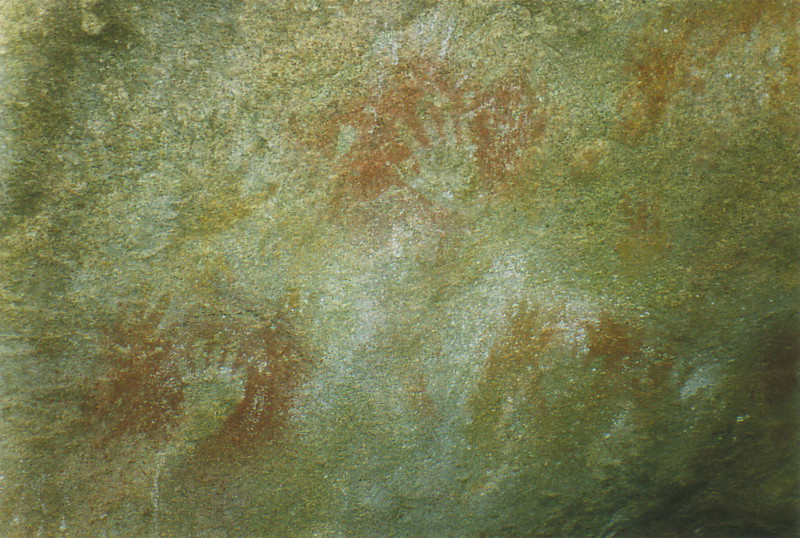
The next morning I set off up a dirt road towards Southern Cross, which is about 200km west of Kalgoorlie, and on the way I visited a place called Mulka's Cave, home to some Aboriginal cave paintings. It strikes me that I've not said much about Aboriginal culture so far, so I'd better explain how the Aboriginal myths hang together.
All the Aboriginal tribes have their own stories about the regions they inhabited, and these stories all come together to form the mythology of the Aboriginal people. The mythology is collectively called the Dreaming, so when you visit parts of Australia and read about how the Aborigines believed the landscape was formed and so on, you're reading part of the Dreaming, and in its entirety the Dreaming describes how everything was formed, from the earth to the animals to the laws of the tribes. For example, the story of the Coorong involves this guy chasing a huge fish about, thus forming the huge dune during the chase, and making the Murray River really wide at that point with the fish's passage. Mulka's Cave also has a story in the Dreaming.
The story goes that this unmarried couple had a child, and because it was forbidden to have children out of wedlock, the child, Mulka, was born cross-eyed. This made it impossible for Mulka to aim his spear straight, so he couldn't hunt animals for food, and was forced to kill and eat little children. This diet made him so large and fierce that the local tribesmen decided to rid themselves of the menace. They chased him out of his cave, and eventually killed him some miles away, where they dumped the body on an ant's nest, without a proper burial. You can still see the handprints of Mulka on the roof of his cave today.
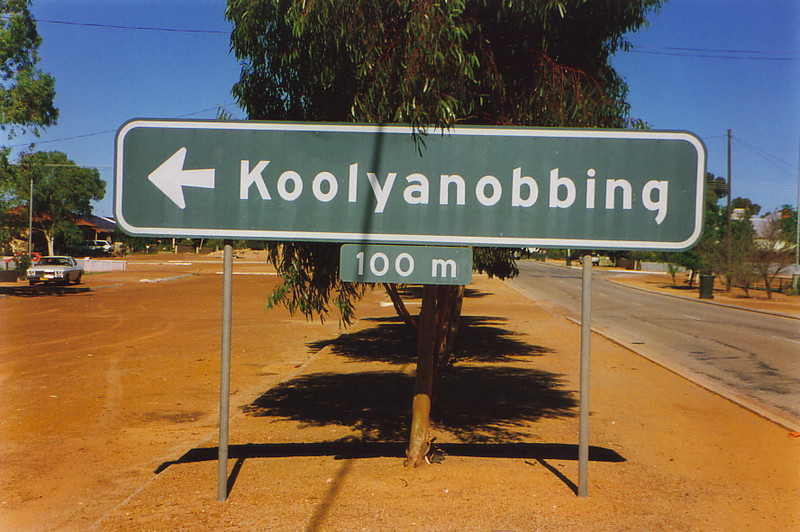
The idea behind the story was to make sure that people didn't flaunt the tribe's marriage laws, rather than trying to stop people from eating children. The handprints are there, too, along with some pictures of hunting that were probably added later. It's quite a thrill seeing these pieces of history, especially when places like Mulka's Cave are so far off the beaten track that very few people will bother. Even I wouldn't have bothered if I weren't taking the back road to Southern Cross.
Another interesting thing about Mulka's Cave, and indeed Wave Rock, is that they are water catchment areas. What this means is that when it rains, water pours over the rocks, and the enterprising local council has built a series of channels and dams to store the water; after all, it's so dry out here most of the time. It's strange to see these ancient rock mounds topped with modern concrete walls to direct the water; it's a bit of a shame, but I suppose it's preferable to huge pipelines from the coast.
My next stop was Southern Cross, a tiny little town in the middle of nowhere that was as peaceful as most little outback towns are. An interesting gimmick in Southern Cross is that every street is named after a constellation (as is the town), and indeed there wasn't a cloud in the sky that night, so the stars were spectacular. But nothing much happens in Southern Cross, so after barbying some snags (that's cooking some sausages on the barbecue to you and me) I hit the sack and awoke on Wednesday to wonderful weather and a straight road heading into the rising sun, all the way to the Eastern Goldfields.
Kalgoorlie
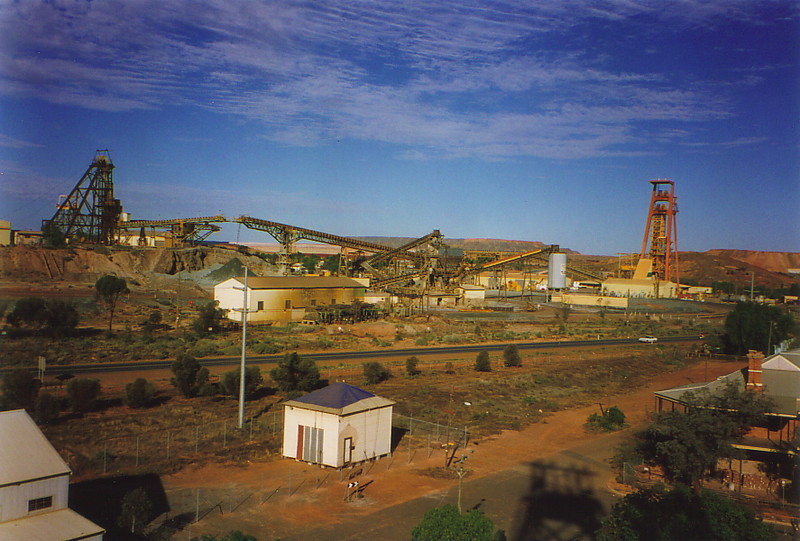
Kalgoorlie is really stranded. Gold was discovered there towards the end of the last century by these wandering travellers looking for grazing land, and the place went ballistic, with crowds of people heading for the desert with gold in their eyes. The only problem? There's precious little water out here, and plenty of them died, or had such terrible living standards that survival was a serious challenge.
The solution, built at the turn of the century, was a huge pipeline from Perth all the way to Kalgoorlie, with storage reservoirs on the way and pumping stations along the route. It's still the way that the goldfields get most of their water, and you notice it when you follow the main highway east. I'd been plying the scenic route until Southern Cross, but then I joined the highway, which has this huge metal pipe along its side all the way to Kalgoorlie. It's quite a strange sight, especially when you get a straight bit that cuts through trees, and you can see two parallel cleared strips heading off into the distance, like a huge railway track. And the way it glitters in the rising sun is quite something...
Kalgoorlie is an oddity. It's in the middle of nowhere, at the end of this pipeline, and it's beautiful. The buildings are exquisite, built when the gold was producing fabulous wealth, and the whole town is surrounded by mines that are still worked. I visited one of these opencast mines, but got turned away while they blasted, so after a quick beer I went back, and you've never seen such a big hole in the ground. When you first see it you think, 'OK, it's big,' but then you look down and see trucks in the bottom that look like Tonka toys, and it's then you realise it's just huge.
I also visited the town museum, and as with other smallish towns in Australia, it was pretty good. I'm not particularly interested in mining or gold (though I probably wouldn't turn down the latter), but it just seemed right to be reading all about it in Kalgoorlie.
Back to Perth
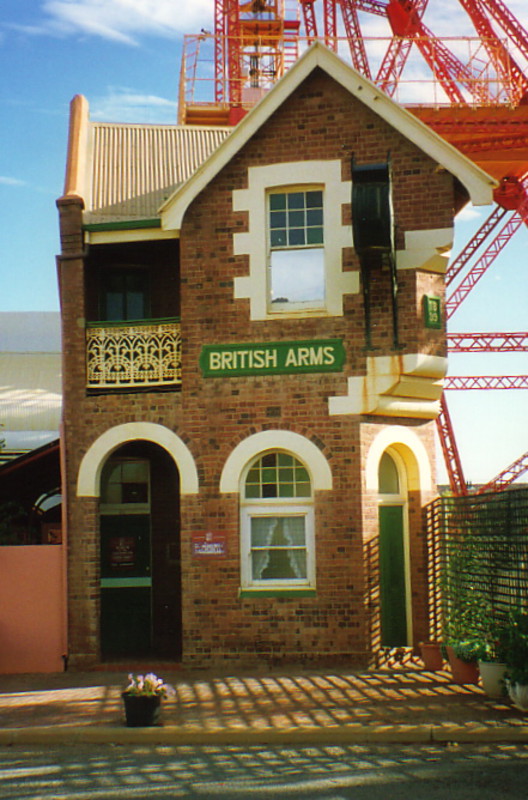
Thursday came along and I decided to head back towards Perth, so I drove south to Kambalda, another mining town, to see the salt lake there, Lake Lefroy. Imagine being on top of a hill, with a searing blue sky above, a dull, reddish desert all around, and this huge, flat, white lake surrounding most of the hill; it was quite a sight in the hot sunshine.
It was a reasonably uneventful journey back to Merredin, except for my lunch stop. I pulled off the road into a picnic spot, and saw a sign to a lookout, just 200m into the bush. I jumped at the chance to pop into the bush and stretch my legs, so I wandered over to this rock outcrop, and what should I see at the nearby waterhole but a flock of emus. They soon spotted me and ran off into the undergrowth, but it was a fascinating sight; the view from the lookout wasn't half bad, either.
Merredin was where the weather broke. It rained. And it rained. I sheltered in the campsite's kitchen, where I was joined by a friendly Siamese cat and a Japanese guy who was cycling across the Nullarbor, which struck me as a pretty intriguing way to spend your life.
Friday saw me arrive in Toodyay (pronounced 'Toojay') in the Avon Valley, only 90km from Perth. The idea had been to go walking in the local National Park, but the weather was so bad I settled for a tour of the Old Gaol (where I learned the story of Moondyne Joe, the convict who just kept escaping) and spent the rest of the day sheltering in the tent. That's because the tent is more waterproof than the car...
...a fact that became quite apparent on Saturday. I drove to Perth and booked myself into a hostel in Scarborough, just down the road from where I was going to be working, and it kept niggling me on the way that the area smelt like Stilton cheese... but it was only on unpacking the car that I discovered the mould in the rear passenger's floor space. Yes, my car is mouldy, and I'm strangely proud of the fact. I might even try to grow some mustard and cress next time it rains...